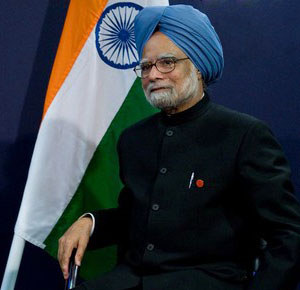Ethno-political phenomena, everywhere in the world, have some common traits; one of then is thought control strategy on subjected group. The dominant group used this strategy on subject group by applying psychological weapons, out of which important psychological weapon is to co-opt the leaders from subject groups by the dominant group. William Safaran writes, in his article published in International Political Science Review (January 1994), that “for dominance on social organizations of society, the dominant group ‘buy of’ or co-opt subordinate group leaders to maintain status-quo. Alternatively, the co-opted ethnic leaders may function as agents to pressure ethnic minorities to tone down their particular demands.” The dominant group will isolate a subordinate group, then negotiate with the latter’s leaders used as device for maintaining control by indirect means.
In almost every ethno-nationalist conflict the dominant group not only suppress the ethno-nationalist feelings among subjective groups by coercion but also use reward and co-option strategy for controlling the minds of the members of subordinate group. For this purpose the dominant group select some elites from the subordinate groups, appoint them on some vital official positions. The severity of the ethno-nationalist feelings among the subordinate group determine the nature of the official positions on which the co-opted leaders are to be appointed.
The containment of Sikh ethno-nationalism by India is an important example of this phenomena. It is not a mere coincidence that both dominant Indian parties i.e. Congress and Bhartiya Janta Party (BJP) whole heartedly accepted the appointments of Sikhs on the India’s highest political offices. Is it not a strange phenomena that India silently accepted the Sikh as a Prime Minister, as a Deputy Speaker of Indian Parliament, Chief of the Staff of Indian Army and Vice chairman of powerful political body of Planning Commission of India. Notably, before these whole sale appointments India never appointed Sikhs in such a large numbers on highest political offices. The moot point is what was the compulsion of Indian establishment that led it to such whole sale appointment? A staunch opponent of Sikhs nationalism, Harjot Oberoi’s observation that Sikh fundamentalists brought India into the state of siege during 1980-90s clarifies the Indian compulsion to co-opt and appoint Sikhs in above mentioned manner, for containing the further development of ethno-nationalism.
Even in Punjab, the homeland of Sikhs, the major Sikh party; Shiromani Akali Dal’s policy to make it a ‘Punjabi Party’ by deleting the word ‘Sikh’ from its’ constitution, also shows the powerful use of thought control strategy initiated by Indian State. It is not only the leaders and whole SAD the religious heads and the Sikh intellectuals become the easy prey of this opprobrium. The fact, that Giani Zail Singh was President of India and the (symbolic) Supreme Commander of Armed forces in India, when Indian Army attacked Sri Darbar Sahib (commonly called the Golden Temple, Amritsar) in 1984, is a clear example of effective use of co-option strategy, in case of Sikhs, by Indian establishments.
After 1992, which marks the trend of downfall in Sikh armed struggle, these co-opted jugglers have been making the mockery of Sikh tenets at large scales. Even the Indian Prime Minister is not an exception. Rather, after co-opting him as the PM of India from a compulsion to choose week and loyal politician, the Congress party made him a phenomena for controlling the psyche of Sikhs. On the other hand a large number of Sikhs are enjoying and celebrating their thrall by hailing appointment of Dr. Manmohan Singh as PM. The Sikhs, who are victims of this phenomena, failed to understand the real motives behind Manmohan Singh’s co-option as the Sikh Prime Minister of India. The Congress party, or more precisely the Gandhi Family, killed many birds with a single arrow: First, it quelled the staunch opposition of Sonia Gandhi as Prime Minister of India by BJP; second, it avoided the fear of the rise of any alternative power-centre outside the Gandhi family; thirdly and mainly, through this appointment by the congress party, the Indian State is applying a thought control strategy for containing the ethno-nationalist feeling in Sikhs.
The position of Dr. Manmohan Singh, as a chosen Prime Minister of India; along with his words and deeds, reflects the position of Sikhs in relation to Indian State. In 2009 Lok Sabha elections, Congress used his ‘Sikh image’ to induce Sikhs to vote for it. Dr. Manmohan Singh approved it silently throughout the election process for almost six month. But just before the last day of elections he, while in Punjab, declared that he was not in favor of asking for votes in the name of religion, and further that, he was firstly ‘an Indian’ and afterwards ‘any thing else’. A question arises that what was the compulsion before the ‘Sikh Prime Minister’ that he did not declared, even at secondary place, that he was a Sikh? The answer to this question lies in the understanding of phenomena discussed here, and what ever is done and said by Dr. Manmohan Singh during his recent meetings with Canadian PM, is just a small reflection.

